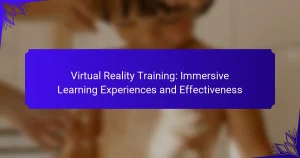Gamification in education significantly boosts student engagement and motivation. This article explores techniques like point systems and leaderboards, highlights benefits such as improved retention and participation, and reviews successful case studies from platforms like Kahoot! and Duolingo. Additionally, it addresses challenges educators face in implementation and offers strategies for effective integration in the classroom.
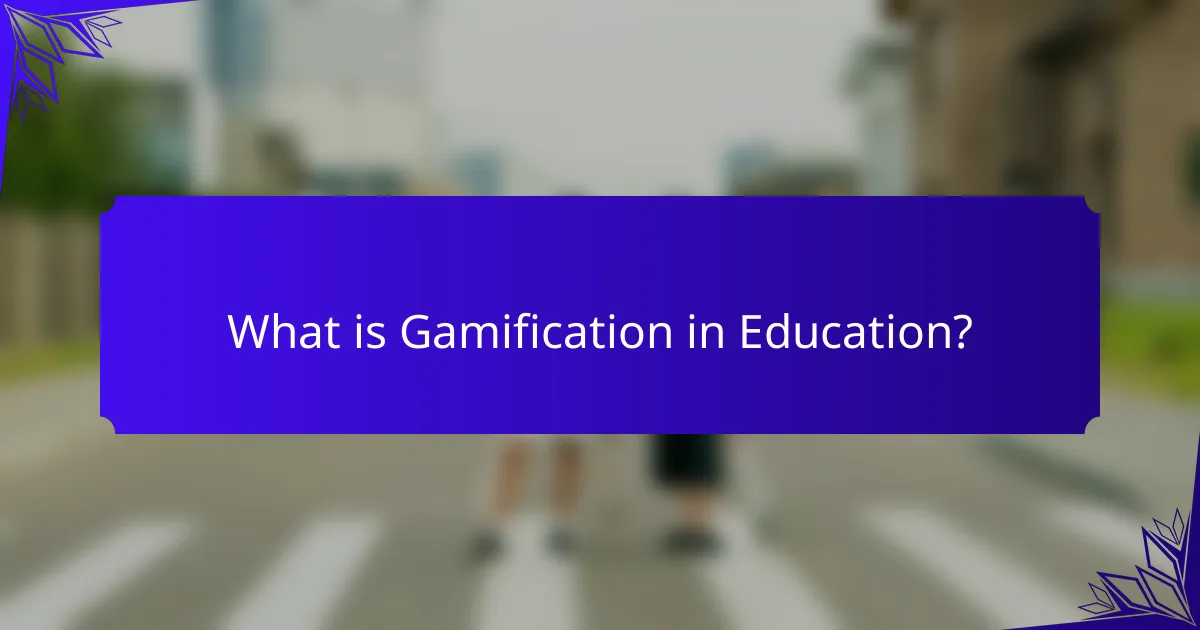
What is Gamification in Education?
Gamification in education involves integrating game elements into learning environments to enhance engagement and motivation. Techniques include point systems, leaderboards, and interactive challenges. Benefits encompass improved retention, increased participation, and a more enjoyable learning experience. Case studies demonstrate successful implementations in various educational settings, highlighting positive outcomes in student performance and satisfaction.
How does gamification enhance learning experiences?
Gamification enhances learning experiences by increasing engagement and motivation. It incorporates game-like elements, such as points, badges, and challenges, to make learning interactive. These techniques lead to improved retention of information and a more enjoyable educational environment. For example, studies show that gamified learning can boost student participation by up to 60%. Additionally, gamification fosters a sense of achievement, encouraging learners to progress through content at their own pace. This approach not only enhances knowledge acquisition but also builds critical thinking and problem-solving skills.
What are the key components of gamification?
Gamification in education involves key components such as game mechanics, engagement strategies, and feedback systems. These elements enhance motivation, promote active learning, and foster a sense of achievement among students.
Game mechanics include points, badges, and leaderboards that create competition and reward progress. Engagement strategies involve storytelling and challenges that make learning interactive. Feedback systems provide timely responses to students, helping them understand their performance and areas for improvement.
Implementing these components effectively can lead to increased student participation and improved learning outcomes.
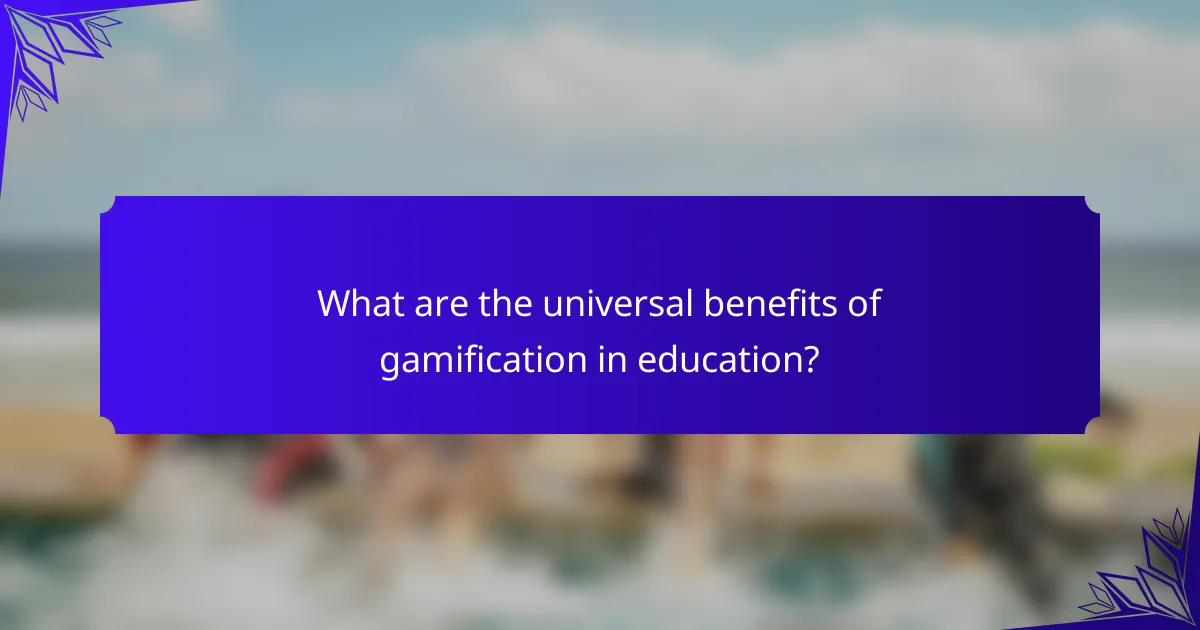
What are the universal benefits of gamification in education?
Gamification in education enhances engagement, motivation, and learning outcomes. It incorporates game elements to create interactive experiences. This approach fosters collaboration, critical thinking, and problem-solving skills among students. Research indicates that gamified learning environments can increase retention rates by up to 20%. Additionally, it allows for personalized learning paths, catering to individual student needs. As a result, gamification not only makes learning enjoyable but also significantly improves educational effectiveness.
How does gamification improve student engagement?
Gamification significantly enhances student engagement by incorporating game-like elements into learning. This approach motivates students through rewards, challenges, and competition, leading to increased participation. For instance, studies show that gamified learning environments can improve retention rates by up to 34%. Engaging elements such as leaderboards and badges create a sense of achievement, fostering a positive learning atmosphere. Ultimately, gamification transforms traditional education methods, making learning more interactive and enjoyable.
What role does gamification play in knowledge retention?
Gamification enhances knowledge retention by engaging learners through interactive elements. Techniques like point scoring, badges, and leaderboards motivate participation, making learning enjoyable. Research indicates that gamified learning can improve retention rates by up to 50%. This approach taps into the unique attribute of competition, fostering a deeper connection to the material. Case studies show significant increases in knowledge recall among students who engage with gamified content compared to traditional methods.
How can gamification foster collaboration among students?
Gamification fosters collaboration among students by encouraging teamwork through game-like elements. It enhances engagement, promotes communication, and builds a sense of community. Collaborative tasks, such as group challenges and competitions, motivate students to work together, leveraging their strengths. As a result, students develop social skills and a shared sense of achievement, reinforcing collaborative learning environments.
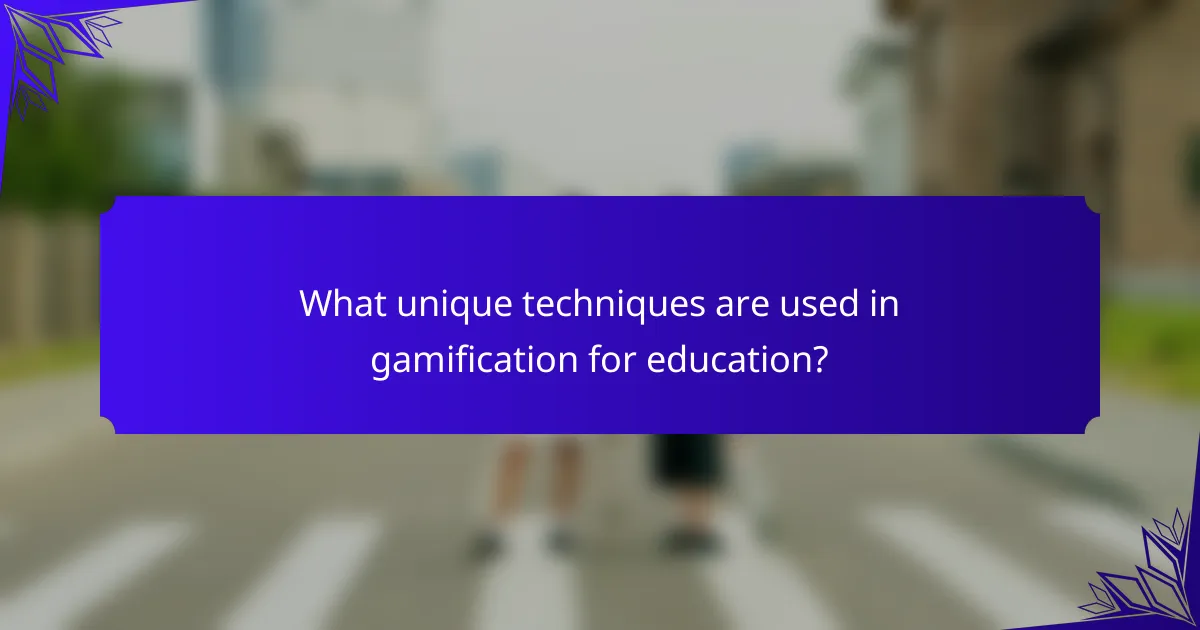
What unique techniques are used in gamification for education?
Gamification in education employs unique techniques such as point systems, leaderboards, and badges to enhance engagement. These elements motivate students by providing immediate feedback and a sense of achievement. For example, incorporating storytelling in lessons can create immersive learning experiences. Additionally, adaptive learning pathways allow for personalized education, catering to individual student needs and learning speeds. These techniques foster a more interactive and enjoyable learning environment, driving better educational outcomes.
How do game mechanics influence learning outcomes?
Game mechanics significantly enhance learning outcomes by increasing engagement and motivation. Techniques such as points, badges, and leaderboards create a competitive environment that encourages participation. As a result, students often retain information better and develop critical thinking skills. Case studies show that gamified learning environments lead to improved academic performance and higher student satisfaction.
What types of rewards are effective in educational gamification?
Effective rewards in educational gamification include intrinsic rewards, extrinsic rewards, and social rewards. Intrinsic rewards foster personal satisfaction and motivation through achievements. Extrinsic rewards, such as badges or points, provide tangible incentives for completing tasks. Social rewards encourage collaboration and recognition among peers, enhancing engagement. Each type of reward can significantly influence student motivation and learning outcomes.
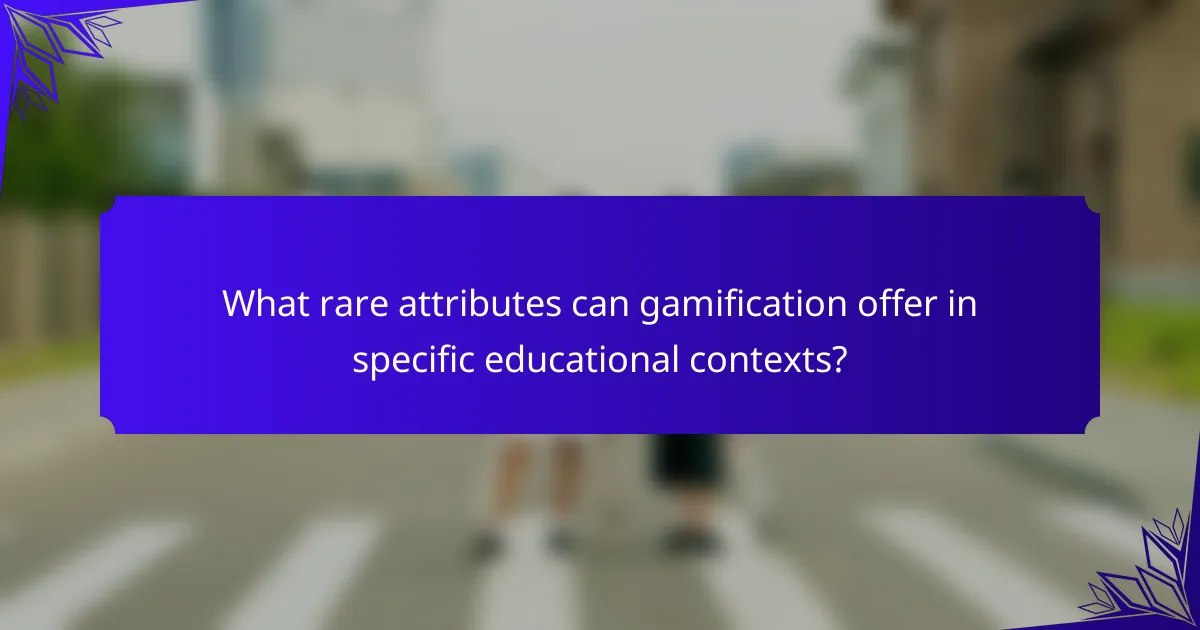
What rare attributes can gamification offer in specific educational contexts?
Gamification can offer unique attributes in specific educational contexts, enhancing engagement and learning outcomes. One rare attribute is the ability to create immersive simulations that mimic real-life scenarios, allowing students to practice skills in a safe environment. Another rare aspect is the use of personalized feedback systems that adapt to individual learning paces, fostering a deeper understanding of concepts. Additionally, gamification can facilitate collaborative learning experiences through team-based challenges, promoting social interaction and teamwork. These attributes contribute to a more dynamic and effective educational experience.
How can gamification address diverse learning needs?
Gamification effectively addresses diverse learning needs by engaging students through interactive and rewarding experiences. It caters to various learning styles, enhancing motivation and retention. Techniques like point systems and badges foster competition and collaboration, appealing to both intrinsic and extrinsic motivators. Case studies show improved outcomes in classrooms where gamification is implemented, demonstrating its potential to create inclusive learning environments.
What innovative technologies enhance gamification in education?
Innovative technologies such as augmented reality, virtual reality, and artificial intelligence enhance gamification in education by creating immersive and personalized learning experiences. These technologies foster engagement and motivation among students, making learning enjoyable and effective. For example, augmented reality can overlay digital information onto real-world environments, allowing students to interact with content dynamically. Virtual reality provides simulations that can lead to deeper understanding through experiential learning. Artificial intelligence can tailor educational content to individual learning paces and styles, optimizing the gamified experience.
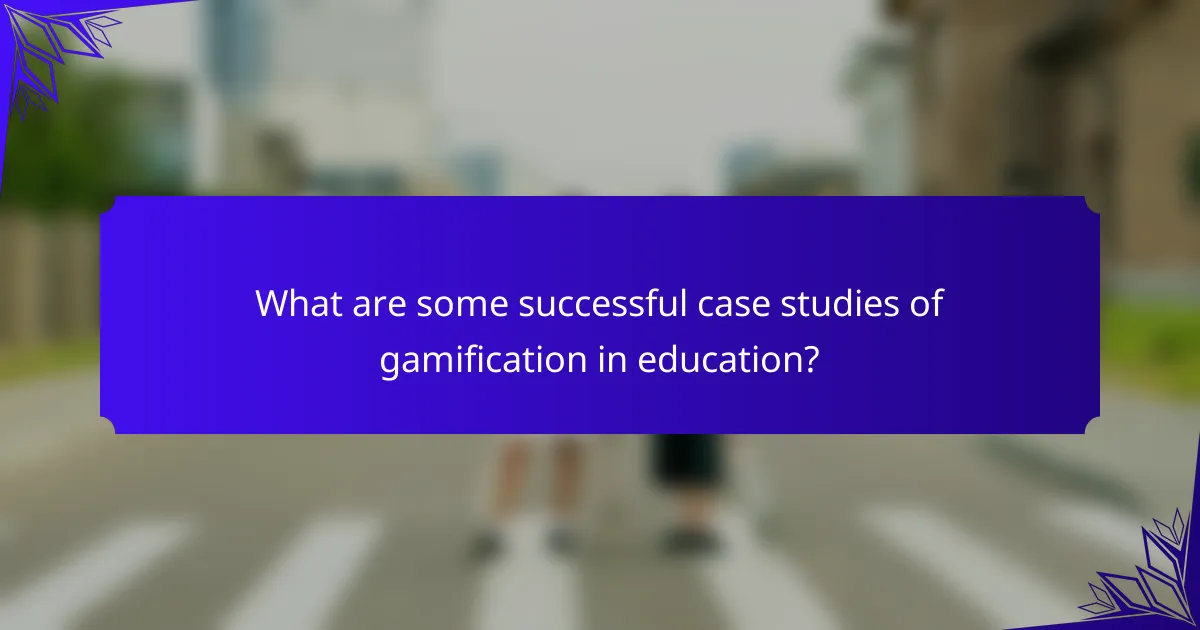
What are some successful case studies of gamification in education?
Gamification in education has proven successful in various case studies. One notable example is the use of Kahoot! in classrooms, which increases student engagement through game-based learning. Teachers reported improved participation and retention rates. Another case is Classcraft, where students earn points for positive behavior and academic achievements, fostering collaboration and motivation. Additionally, the Duolingo app effectively utilizes gamification to teach languages, with users motivated by rewards and progress tracking. These case studies highlight the benefits of gamification in enhancing learning experiences and outcomes.
What lessons can be learned from gamified classroom implementations?
Gamified classroom implementations teach valuable lessons about engagement and motivation. They demonstrate that incorporating game elements can enhance student participation and improve learning outcomes. Key insights include the importance of clear objectives, immediate feedback, and a sense of achievement. Additionally, fostering collaboration through team-based challenges can build community and enhance social skills. These strategies show that gamification can transform traditional learning environments into dynamic, interactive experiences.
How have educational institutions measured the impact of gamification?
Educational institutions measure the impact of gamification through various assessment techniques. They utilize metrics such as student engagement levels, academic performance, and retention rates. Surveys and feedback mechanisms also provide insights into student experiences and motivation. Case studies demonstrate improved learning outcomes, showcasing gamification’s effectiveness in diverse educational settings. Institutions often analyze data to refine gamification strategies, ensuring alignment with educational goals.
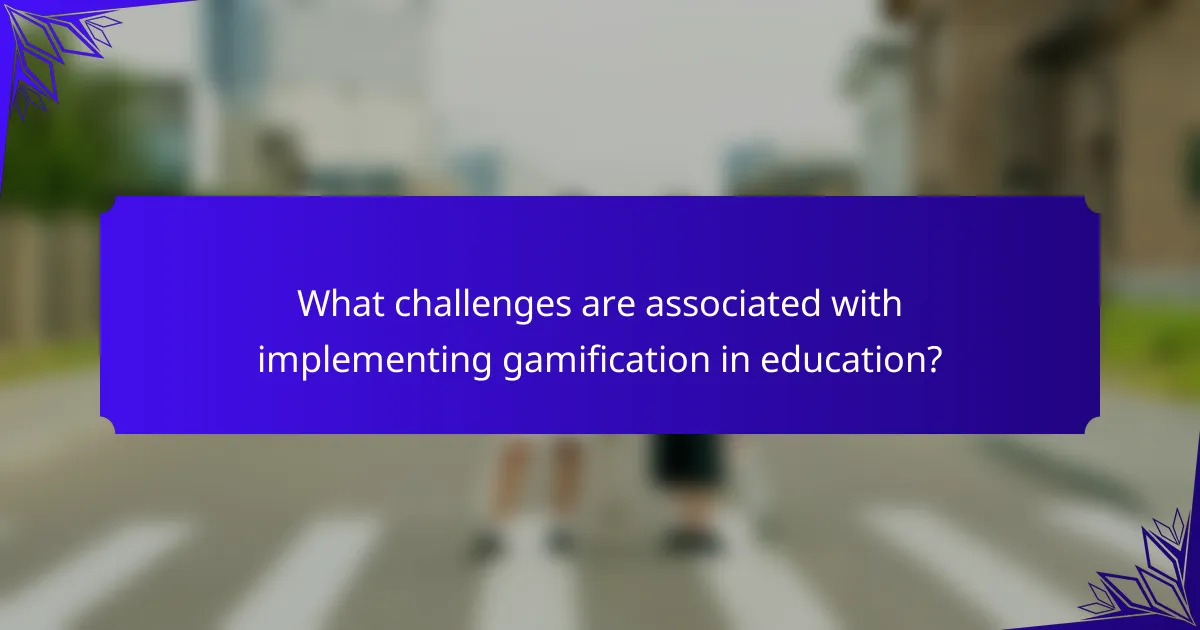
What challenges are associated with implementing gamification in education?
Implementing gamification in education faces challenges such as resistance from educators, lack of resources, and insufficient training. Resistance often stems from traditional teaching methods. Limited resources can hinder the development of engaging gamified content. Additionally, inadequate training may leave educators unprepared to effectively use gamification techniques. These factors can impede the successful integration of gamification in educational settings.
How can educators overcome resistance to gamification?
Educators can overcome resistance to gamification by demonstrating its effectiveness and aligning it with learning objectives. Engaging stakeholders through workshops can build understanding and acceptance. Providing examples of successful case studies can showcase tangible benefits. Continuous feedback and adaptation of gamified elements ensure they meet learners’ needs.
What are the common pitfalls in gamification design?
Common pitfalls in gamification design include overemphasis on rewards, lack of clear objectives, and neglecting user feedback. These issues can undermine engagement and diminish learning outcomes.
Overemphasizing rewards can lead to extrinsic motivation, which may decrease intrinsic interest in the subject matter. Lack of clear objectives results in confusion, making it difficult for users to understand the purpose of the gamified elements. Neglecting user feedback can prevent necessary adjustments, leading to a disconnect between the design and user experience.
Addressing these pitfalls enhances the effectiveness of gamification in educational settings, ultimately improving student engagement and learning.

How can educators effectively integrate gamification into their teaching strategies?
Educators can effectively integrate gamification by incorporating game elements into their teaching strategies to enhance engagement and motivation. Techniques include using point systems, badges, and leaderboards to reward student achievements. These elements foster a sense of competition and accomplishment, encouraging active participation. Case studies indicate that such methods can lead to improved learning outcomes and increased student satisfaction. For example, a study revealed that classrooms utilizing gamification saw a 30% rise in student engagement compared to traditional methods.
What best practices should be followed for successful gamification?
To achieve successful gamification in education, focus on clear objectives, engaging content, and timely feedback. Incorporate elements such as rewards, challenges, and leaderboards to motivate learners. Ensure that the gamified experience aligns with educational goals and enhances learning outcomes. Regularly assess and adapt the gamification strategies based on student feedback and performance metrics.
How can feedback loops enhance the gamification process?
Feedback loops significantly enhance the gamification process by fostering continuous improvement and engagement. They provide learners with timely insights on their performance, allowing them to adjust strategies and improve skills. This iterative feedback encourages motivation and reinforces learning objectives. Additionally, incorporating feedback loops can lead to higher retention rates and deeper understanding of educational content. Engaging students through regular feedback cultivates a sense of ownership over their learning journey, ultimately driving better outcomes in gamified educational environments.
What role do analytics play in optimizing gamified learning?
Analytics play a crucial role in optimizing gamified learning by providing insights into student engagement and performance. They enable educators to track progress, identify areas for improvement, and tailor experiences to individual learning needs. By analyzing data, educators can enhance motivation through personalized feedback and adaptive challenges. This data-driven approach ensures that gamification techniques effectively foster deeper learning and retention.
What are the future trends in gamification for education?
Gamification in education is evolving with trends focused on personalized learning experiences, increased use of technology, and enhanced engagement strategies. Future trends include integrating artificial intelligence for adaptive learning, utilizing virtual and augmented reality for immersive experiences, and promoting collaborative learning through gamified platforms. These innovations aim to improve student motivation and retention, making learning more interactive and effective.
How can educators stay updated with gamification advancements?
Educators can stay updated with gamification advancements by engaging in professional development and networking. Attending conferences focused on educational technology and gamification is crucial. Joining online communities and forums allows educators to share experiences and resources. Subscribing to relevant journals and blogs provides insights into the latest research and trends. Collaborating with colleagues can lead to innovative applications of gamification strategies.


